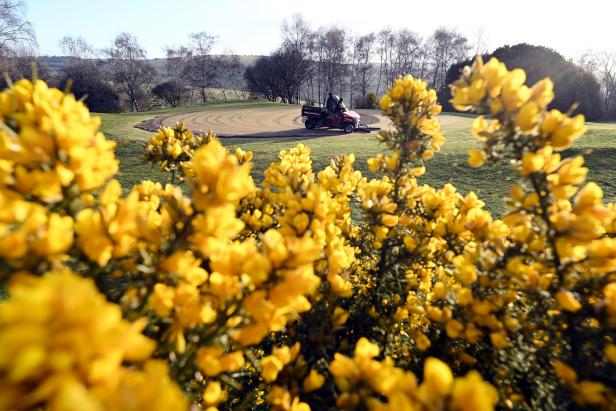As Memorial Day rolls around, golfers in cooler climates eagerly anticipate the start of peak golf season. Courses finally come to life, only to be disrupted by aeration shortly thereafter. This annual frustration prompts many to question the timing behind this maintenance practice, wondering why superintendents wait until the greens are in good shape to aerate. Golf Digest spoke with Mike Dachowski, superintendent at the prestigious Shelter Harbor Golf Club in Rhode Island, to shed light on this subject.
Timing is crucial when it comes to aeration, according to Dachowski. Aeration should occur when the grass is actively growing to facilitate quicker healing of the greens. By waiting until the grass has reached an appropriate growth potential, aeration holes fill in much faster than if the process was done earlier in the season when the grass was dormant. Growth potential is a key factor in determining the optimal timing of aeration, with a growth potential of at least 50% indicating that the grass will recover effectively post-aeration.
Shelter Harbor Golf Club schedules its spring aeration for the day after Memorial Day when the grass has reached peak growth potential. The greens quickly rebound after aeration due to the grass’s active growth phase. Similarly, the club performs fall aeration on the day after Labor Day to ensure the greens recover before the growth potential drops off significantly in October. Understanding the growth potential of the grass in their region allows superintendents to adjust their aeration schedules accordingly.
While golfers may find aeration frustrating, it is a necessary practice to maintain the health and longevity of the greens. By aerating at specific times throughout the year, superintendents can prevent thatch buildup, promote turf health, and ensure the greens remain in top condition for an extended period. By collaborating with experienced superintendents like Dachowski, golfers can gain a deeper understanding of the science behind aeration practices and appreciate its benefits for the course.
In addition to aeration, superintendents employ various maintenance strategies to keep golf courses in top shape. Home lawn care tips from golf course superintendents can provide valuable insights for maintaining personal greenspaces, while discussions with superintendents about cutting green length or repairing ball marks can offer clarity on common concerns. Ultimately, the goal of all course maintenance practices, including aeration, is to enhance the overall playing experience for golfers and ensure the longevity of the course. By working closely with superintendents and understanding the reasoning behind maintenance decisions, golfers can gain a deeper appreciation for the meticulous care that goes into keeping their favorite courses in optimal condition.
